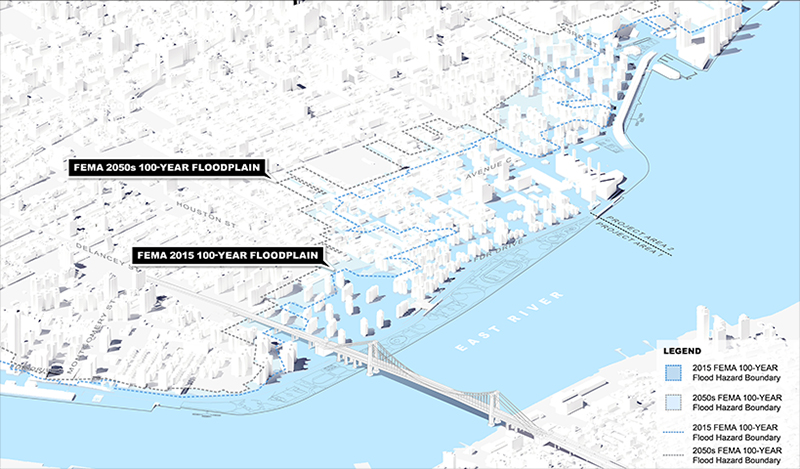
 East Side Coastal Resiliency311
East Side Coastal Resiliency311 Search all NYC.gov websites
Search all NYC.gov websites
Project Background
Project Background
In 2012, Hurricane Sandy struck New York City, killing 44 New Yorkers, devastating entire neighborhoods, and causing approximately $19 billion in damage citywide. In the aftermath of the storm, New York City launched a process to assess climate change vulnerabilities and began advancing an ambitious portfolio of long-term coastal protection projects that will prevent flooding while increasing the vibrancy and accessibility of public waterfront spaces.
The East Side Coastal Resiliency (ESCR) project emerged from the US Department of Housing and Urban Development (HUD)'s Rebuild by Design competition, which sought to develop innovative design solutions to increase the resiliency of Sandy-impacted communities. The project area, spanning from Montgomery Street to East 25th Street, is located within the Federal Emergency Management Agency (FEMA) 100-year floodplain and includes a large and diverse residential community of more than 110,000 New Yorkers, including approximately 28,000 NYCHA residents. ESCR will also offer protection to critical infrastructure—including a major pump station and an electrical substation that powers much of Lower Manhattan—as well as numerous local schools and libraries.

ESCR will create a 2.4 mile flood protection system that will consist floodwalls and floodgates that will be blended into the fabric of the community by integrating with local streets, the elevated East River Park, and the new landscape surrounding Corlears Hook Park, Murphy Brothers Playground, Stuyvesant Cove Park, and Asser Levy Playground. The project will also involve significant investments in underground interior drainage improvements that will improve the capacity of the sewer system.
This project is the result of years of planning and collaboration among City, State, and Federal agencies, Elected Officials, and the local community, which has been enabled by a $338 million federal grant to fund design and construction, with the remainder of the project's $1.45 billion total cost funded by the City of New York.
The ESCR Project is the first step in the City's plan for a larger coastal protection system in Lower Manhattan. While the project is being designed as a stand-alone "compartment" to reduce flood risk between East 25th Street and Montgomery Street, it will tie-in with complementary initiatives in Lower Manhattan, including the Lower Manhattan Coastal Resiliency, Resilient Neighborhoods Study, Con Edison Resiliency, Hospital Row Investments, and NYCHA Resiliency.
Benefits and Goals
- Flood Risk Reduction from future storm surge and sea-level rise;
- Improved Access with expanded connections between local communities and the waterfront, and designing to meet universal access standards;
- Enhanced Public Spaces with resilient design, updated recreation facilities, increased multi-use spaces, new furnishings, and ecologically diverse landscaping
ESCR is a one-of-a-kind, forward-thinking resiliency project being constructed in a dense urban environment with complex below and above-ground infrastructure. This project is intended to build physical, social, and economic resiliency, strengthening the City's coastline while improving waterfront open space and accessibility.
- Learn more about the Design Phase of the ESCR Project
- Read documents from the Environmental Review process, including the Final Environmental Impact Statement


